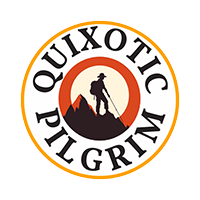Travel in the twilight period as (hopefully!) the world begins to turn the corner from the Covid-19 pandemic has been an interesting experience, one I would describe as one with far more benefits than drawbacks. My three weeks in Iceland and Spain have seen much smaller crowds, an almost total absence of massive tour buses, and a blessed shortage of cruise ships disgorging multitudes interested in storming the streets of a new city before going back to stimulate the economy of cruise lines at their buffet tables.
Over three weeks, I flew from Hawaii to the US before spending 12 days in Iceland, six in Barcelona, and three more in Iceland.
In exchange for these smaller crowds, one must carefully research an ever-fluid set of regulations about entry into other countries and return to the United States, a huge number of QR codes online forms and PCR tests, but in every case in Iceland and Spain, the process was relatively simple, if occasionally time-consuming.
One note, though. Be patient with airline staff who are probably struggling as much as you are to keep up with the changing regulations. For one heart-stopping moment at the Barcelona Airport, a worker at the check-in told me that I could not board my flight back to Reykjavik. After a bit of patient conversation and a few phone calls to supervisors, I was on my way.
My arrival at Keflavik Airport for the first leg of the trip could not have been smoother. Iceland requires vaccination and a pre-trip registration, and the entire process from landing to getting to my camper van didn’t take more than 15 minutes. Passengers are required to quarantine until they receive their results from the test—I was told five hours was typical, which was how long I waited—but the process is pretty loose. I told the inspector I would be in a camper van waiting for results, and that was sufficient.
At first, it was a bit unnerving to be in Iceland. The country just relaxed its mask requirements and almost everyone seems to have abandoned them. After a few strange looks at an N1 when I was grabbing a hot dog, I decided to join the mask-free Icelanders. And this is the time and place to do it. I have never seen Iceland quite like this, with small crowds even at the big South Coast attractions and long drives without seeing a single tour bus. One of the coolest things is that I saw and spoke to a number of Icelanders who were traveling and experiencing the wild spaces of their own country, some for the first time.
Getting to Spain was even easier. There was no test at the airport, just a quick check for a vaccination card and I was free to explore. Spain jumped a bit earlier than much of the EU, but it seems this will be the model for most of the block in the next few weeks.
Unlike Iceland, Spain has not abandoned its mask mandate, but it’s in a strange spot. People are required to wear them outdoors—though many, many, many Spanish men seemed to believe that the masks offered the most protection if worn around the chin—and they are not required in bars and restaurants. One of the most Spanish signs I have ever seen noted that customers were limited to a short 90-minute dinner to help combat the virus’s spread.
Traveling as a tourist certainly means that you’re likely to encounter people in the tourism industry more than others, and there’s no question they are likely more enthusiastic about the return of travel than anyone else. I’m not sure everyone in Iceland and Spain was quite as thrilled to see me.
Just I have seen in Hawaii, though, there is a sense among the people who operate these tourist businesses that something needs to be done to control the worst excesses of tourism, the excesses that generate resentment and undermine the experience.
People in Barcelona have the same frustrations about housing costs that people in Hawaii do, and I spoke to one person in Reykjavik who said that the best thing about the pandemic was that people had been able to get one-year leases for apartments, a welcome change from the six-month leases many had lived with so that spaces could be rented out on Airbnb during the tourist season.
It’s heartening to see people thinking creatively about ways to make tourism and real-life co-exist better, and I am certainly aware of the privilege I had to be able to travel during this moment when much of the world is still struggling with the pandemic and its lasting economic effects.
We’re all going to have to do some real thinking about how to make experiencing the rest of the world—something that has unquestioned value—an exercise that sustains the communities we visit more than it undermines them. For me, it’s time to do more reading and research about sustainable travel and better economic practices when I do.
What about you?




